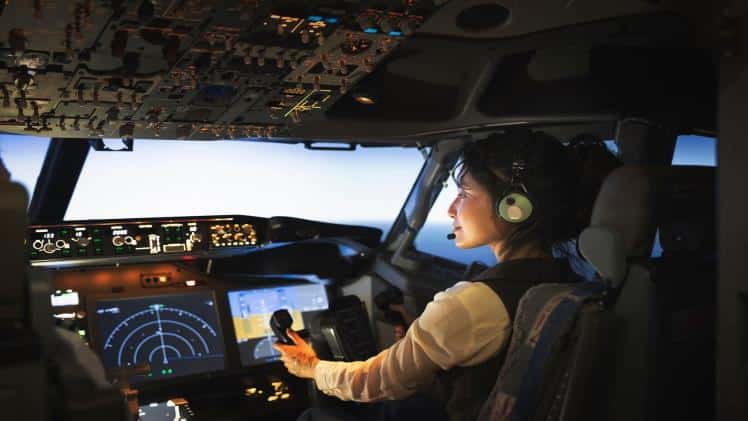Safety is paramount in aviation, and the role of pilots extends far beyond handling the controls of an aircraft. Their responsibilities encompass extensive knowledge of safety procedures, risk management, and regulatory compliance. One of the most effective ways to enhance these skills is through dedicated safety courses. Training such as Aviation Part CAMO (Continuing Airworthiness Management Organisation) not only sharpens pilots’ understanding of aircraft maintenance and operational standards but also contributes significantly to a safer and more resilient aviation environment. Here, we explore the key benefits of safety courses for pilots and the critical role they play in modern aviation.
- Enhanced Knowledge of Safety Protocols
Safety courses for pilots are designed to equip them with comprehensive knowledge of standard and emergency procedures. This ensures that pilots are prepared for various scenarios, from minor technical issues to more severe in-flight incidents. By participating in courses like Aviation Part CAMO training, pilots gain insights into how airworthiness is managed and maintained, boosting their understanding of the operational state of the aircraft they fly.
Aviation Part CAMO training, in particular, focuses on the management of an aircraft’s continued airworthiness. Pilots trained in CAMO protocols have a better grasp of maintenance schedules, defect reporting, and how to liaise effectively with ground maintenance teams. This holistic view supports proactive decision-making, enabling pilots to anticipate potential issues and handle them before they escalate.
- Improved Decision-Making Under Pressure
A crucial skill for any pilot is the ability to make sound decisions under pressure. Safety courses simulate high-stress situations and teach pilots how to manage their responses effectively. This type of training often incorporates scenarios that test a pilot’s reaction to system failures, adverse weather, and unexpected operational challenges. By practising these responses in a controlled setting, pilots can build the confidence and composure needed to act swiftly and decisively in real-life situations.
Safety courses emphasise the importance of staying calm, evaluating options, and implementing solutions methodically. This training can be lifesaving, as quick, informed decisions are vital when facing time-sensitive issues in the air.
- Compliance with Regulatory Standards
Aviation is a highly regulated industry, with stringent standards set by bodies such as the International Civil Aviation Organization (ICAO) and the European Union Aviation Safety Agency (EASA). Regular safety training ensures that pilots stay up to date with the latest regulations and best practices. Aviation Part CAMO training, for instance, helps pilots understand their role in the broader context of airworthiness compliance and ensures they meet the required safety standards.
By undertaking safety courses, pilots fulfil mandatory training requirements and demonstrate their commitment to maintaining high standards. This compliance is essential for the pilot’s professional credibility and contributes to the overall safety culture within the aviation industry.
- Increased Awareness of Aircraft Maintenance
While pilots are not responsible for performing maintenance themselves, having a strong understanding of how it is managed enhances their operational awareness. Aviation Part CAMO training provides pilots with a detailed understanding of the procedures involved in keeping an aircraft safe and airworthy. This knowledge allows them to communicate effectively with maintenance teams and understand reports or updates related to aircraft condition.
Being informed about the maintenance and airworthiness of their aircraft helps pilots make more informed pre-flight and post-flight decisions. If an issue arises, they can provide clearer reports to engineering staff, aiding quicker resolutions and ensuring aircraft are serviced to the highest safety standards.
- Reinforcing Safety Culture in Aviation
Safety courses do more than just teach technical skills; they also reinforce the importance of maintaining a safety-first mindset. The aviation industry depends on a culture where safety is prioritised at all levels, and pilots play a crucial role in fostering this culture. By participating in courses that stress the value of communication, teamwork, and adherence to safety procedures, pilots contribute to a collaborative environment where risks are minimised, and safety is consistently prioritised.
Courses like Aviation Part CAMO training provide pilots with a greater understanding of the interconnectedness of various aviation roles. This perspective encourages better collaboration with other aviation professionals, such as engineers, air traffic controllers, and ground staff, all contributing to a safer flying experience.
- Boosting Pilot Confidence and Competence
Ongoing education and training help pilots feel more confident in their abilities and competence. The more prepared a pilot is for unexpected events, the more secure they will feel in their role. Safety courses that include practical, hands-on components alongside theoretical knowledge ensure that pilots can apply what they learn directly to their flights.
Aviation Part CAMO training, for example, provides pilots with tangible insights into managing an aircraft’s airworthiness. This boosts their confidence when conducting pre-flight checks, interpreting maintenance records, and addressing any potential anomalies. Knowing that they have received training that meets high industry standards reassures pilots that they are well-equipped to handle both routine and extraordinary circumstances.


